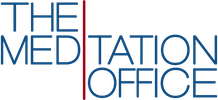How Meditation Can Make You A Better Artist
Anyone who works with art can tell you about the first moments of existential dread that marks the beginning of a new work. This is true not only for musicians, writers, painters, or architects but for anybody for whom creativity is part of their process. This can also include writing a thoughtful email or updating a website.
You stand before the endless white plains of potential, and they stare back like a Nietzschean abyss, casting shadows of doubt into every aspect of your being. Back in the day, most artists had less than healthy ways of dealing with this anxiety, but contemporary creators may have found a better solution in meditation. Here is how to make your creative process less painful and more playful.
Different Types of Meditation
Did you know that there are two main types of mindfulness meditation? They are Open Monitoring and Focused Attention, both of which are engaged by mediators during a session. Focused Attention refers to meditation focused on a single object, which can be a sound, a visual object, or the breath.
On the other hand, in Open Monitoring, the meditator does not focus on a specific object or event and instead remains attentive to anything that might capture their attention at any given moment, be it thoughts and feelings, or things like ambient sounds and smells.
Researchers have recently discovered that each type of meditation supports two different thinking patterns that are tied to creativity in our brain:
• Divergent Thinking: Trained by Open Monitoring, it represents the process of creating multiple responses to an open-ended question, without regard for a “correct answer” (think of brainstorming for example).
• Convergent Thinking: Trained by Focused Attention, it focuses on finding the right answer to a specific question while also sorting the solutions created through its divergent counterpart and picking a “correct answer”.
Focus
When you meditate and access a more centered place within yourself, you find that focusing on the task at hand becomes easier. It’s the same principle behind arranging your desk before sitting down to work, a cluttered workspace makes it harder to get anything done, and a cluttered mind makes creating even harder.
As you may expect, this ability is mostly trained in Focused Attention meditation, as it involves developing something of a healthy tunnel vision at will. Much like you focus on your breath, you focus on the task before you and nothing else, and more importantly, you catch yourself being distracted much more quickly.
Intuition
Intuition is the art of letting one idea lead you to another in a creative chain that culminates in the completing (or abandoning) of the piece. By engaging in both Open Monitoring and Focused Attention meditation and training your divergent and convergent thinking, it becomes easier to consider many ideas before picking and sticking to one. As a result, your work is more fluid, and you don’t find yourself stuck in creative blocks as much.
Inspiration
The renowned painter Gustav Klimt once wrote in a rare writing called ‘Commentary on a Non-Existent Self-Portrait’, “Whoever wants to know something about me, they should look attentively at my pictures and there seek to recognize what I am and what I want.”
Meditation brings us into closer contact with our inner self in all its different facets that serve as a bottomless well of inspiration. To this end, Open Monitoring meditation offers a great aid, as it allows you to contemplate all the different sensations you are going through at the moment you’re trying to create.
If you learn to express this through your art, you will never run out of things to say, and what you say will always be filled to the brim with authenticity.
Making Art As a Form of Meditation
Not only is meditating extremely beneficial for artists, but the creative process itself can be also a form of meditation.
No one understands this better than the Buddhist Teacher (and expressionist painter), Dzigar Kongtrul Rinpoche, who states
I believe we can view art as a form of contemplative meditation. I don’t see it as separate from meditation practice in any way. However, since art-making involves being actively engaged with the physical body, the emotions, and the mind, in contrast to resting in the nature of mind without moving, we could consider art to be a form of meditative conduct.
In other words, not only can your art and the very experience of making it be improved by meditation, your painting, composing, or writing can also be a form of meditation in itself, incorporating both Open Monitoring and Focused Attention as you focus on the task at hand, all the while using it to express all the inner and outer sensations you are going through at the moment.
Conclusion
The English Romantic Painter William Turner once said: “It is only when we are no longer fearful that we begin to create.” Indeed, the first challenge any artist faces, no matter how experienced they may be, is to overcome the dread created by the empty page or canvas.
Meditation, on the other hand, helps you let go of the causes of this fear and approach your work from a calm and focused state, leading to more satisfying results.
So, if you are an artist, why not give meditation a try when you are going through a creative rut!
If you find this subject intriguing, don’t miss this excellent blog by Kimberly Poppe on how looking at art can also be a meditative practice.

